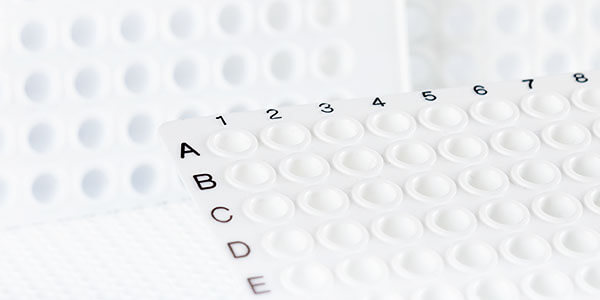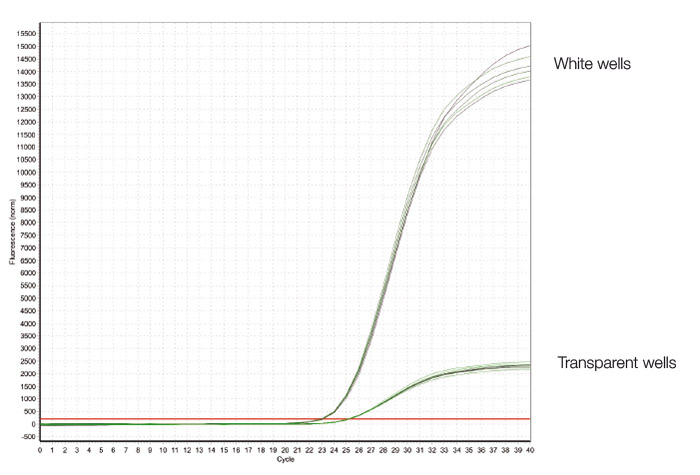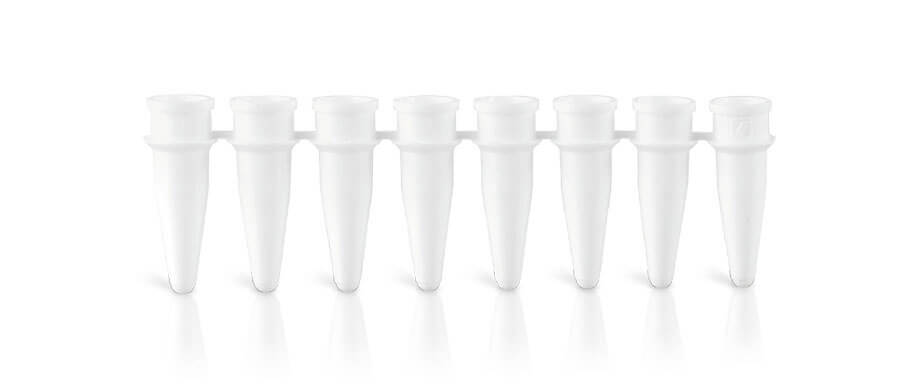Tip of the month: More precise real-time PCRs with white PCR tubes

Improved reproducibility – optimised sensitivity – avoid crosstalk
Fluorescence-based applications, such as real-time PCR (qPCR), benefit from the significantly improved reflective properties of white PCR consumables, particularly when small volumes are used. Despite this, transparent consumables are often still used today to carry out qPCRs. Find out below how you can easily improve your qPCRs.
How does the use of white PCR tubes affect reproducibility?
Owing to the maximum fluorescent reflection of white tubes, no fluorescent light is lost through the walls of the wells, and the quantity of fluorescent light reaching the detector is also more consistent than if transparent products are used. Therefore, you achieve less scattering when detecting duplicates or triplicates and when repeating experiments.
How can an improved signal/background ratio be achieved?
Owing to the fluorescence level of white PCR consumables being many times higher, and to the consistent background effects by the fluorophore used, an improved signal/background ratio is achieved during detection in white PCR tubes.
Can ‘crosstalk’ between individual wells be prevented?
When transparent wells are used, the fluorescence of adjacent wells may be detected due to the scattering of the fluorescent light. Owing to the solid, non-transparent colour of white PCR consumables, the fluorescence detectors of the thermocyclers can no longer detect any fluorescence signals from the adjacent wells.
How does the use of white PCR tubes affect the sensitivity of the PCR?
We would like to address this question using a comparative qPCR experiment. The test result shown in Fig. 1 first shows that, with the same template quantity, the measured fluorescence intensity in white tubes turns out to be considerably higher than that in transparent tubes. For the clear and the white PCR strips in Fig. 1, the threshold was automatically independently calculated by the thermocycler. To detect the 1000 template molecules in the transparent tubes, an average Cq value (n = 8) of 24.87 ± 0.08 was calculated, and a Cq value of 23.40 ± 0.07 was calculated for the white tubes. This means that detection takes place earlier in white tubes. This is particularly advantageous if only small quantities of the sample are available. Therefore, successful detection is still possible using white consumables in cases where it is no longer possible to carry out a meaningful PCR run using transparent consumables.
Comparison of the fluorescence level of white and transparent wells

How does an economical volume reduction in the test batches become possible?
Since white PCR consumables can achieve a fluorescence level that is many times higher, the volume of the test batches and thus the quantities of the reagents used (enzyme, sample, primer, etc.) can be significantly reduced. This means savings can be made on reagent costs.
Conclusion:
The use of white PCR consumables brings considerable advantages, which should not be ignored. Do not compromise your results just so that the wells can be visually inspected from the side or from below.



